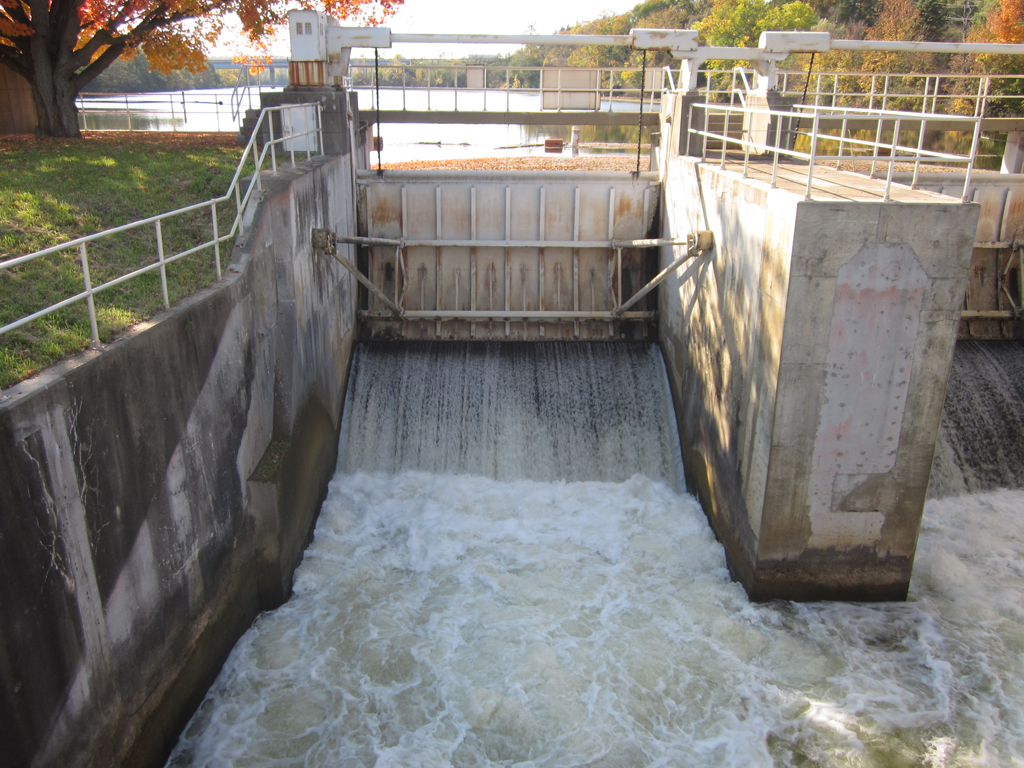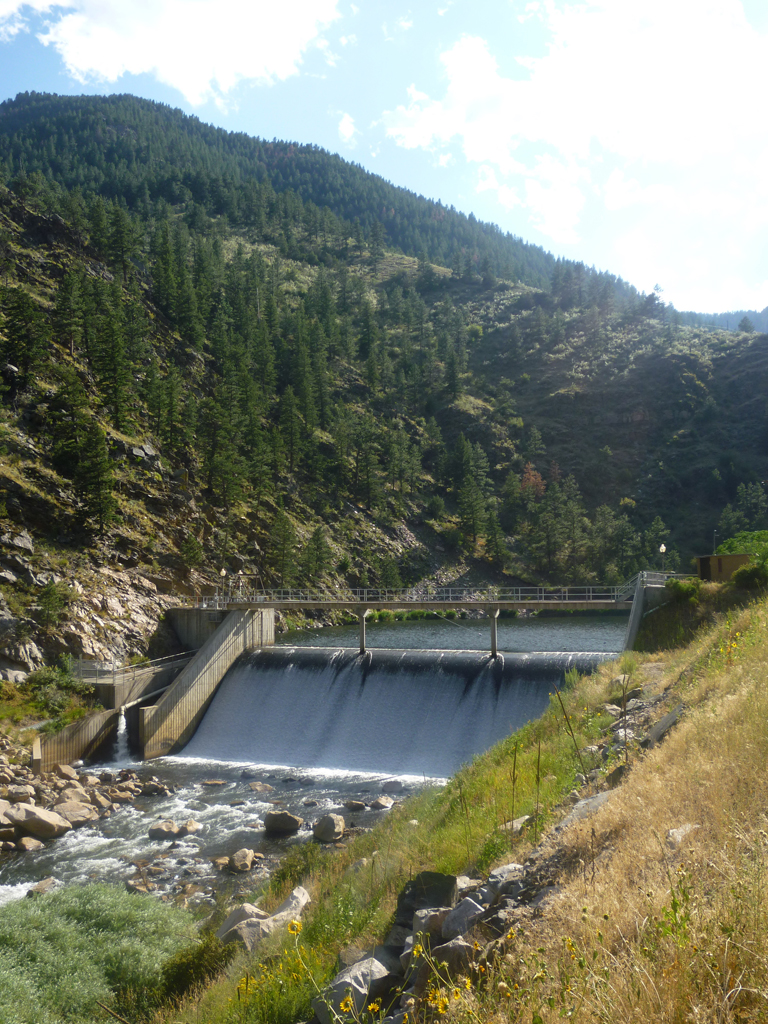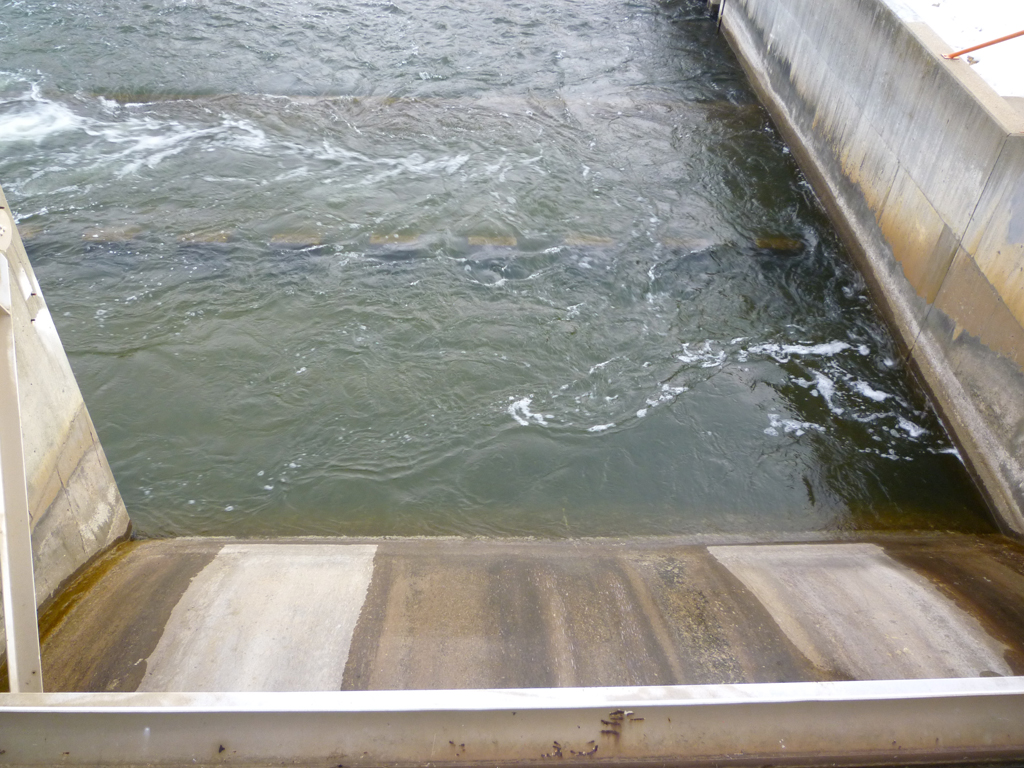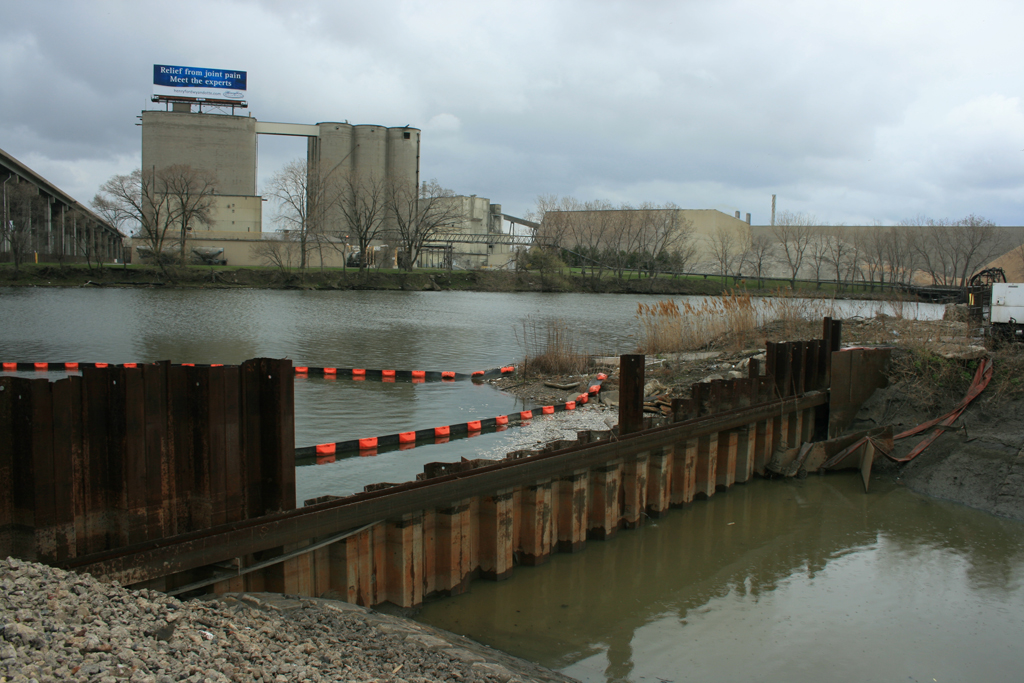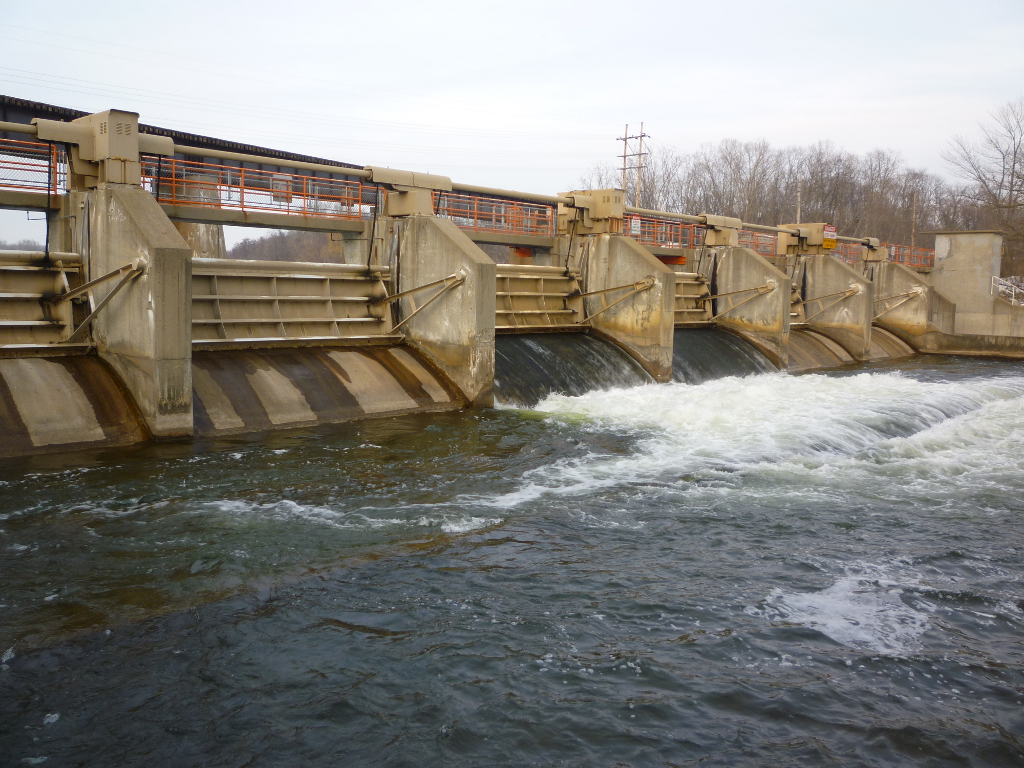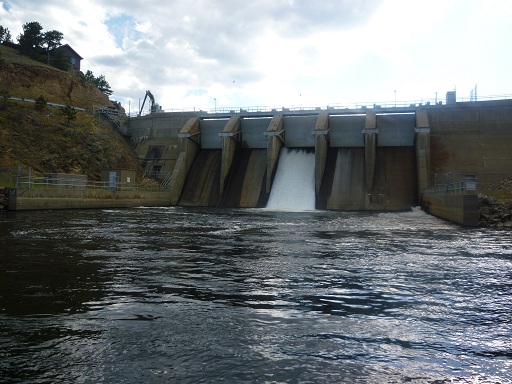
Photo Credit: Alex Mead
Seen here is the Olympus Dam in Estes Park, Colorado near Rocky Mountain National Park. The dam is 70 feet tall and created Estes Lake, 185 acres in size, after its completion. Construction started in the summer of 1947 and the dam is used today mainly for hydroelectric component to generate electricity. This dam uses sluice gates to regulate the height of the water behind it, and they can been seen at the top of the dam. Currently, the center gate of five is the only one open, but during the spring melt the dam can drain near full capacity to keep the water behind it at a safe level.
